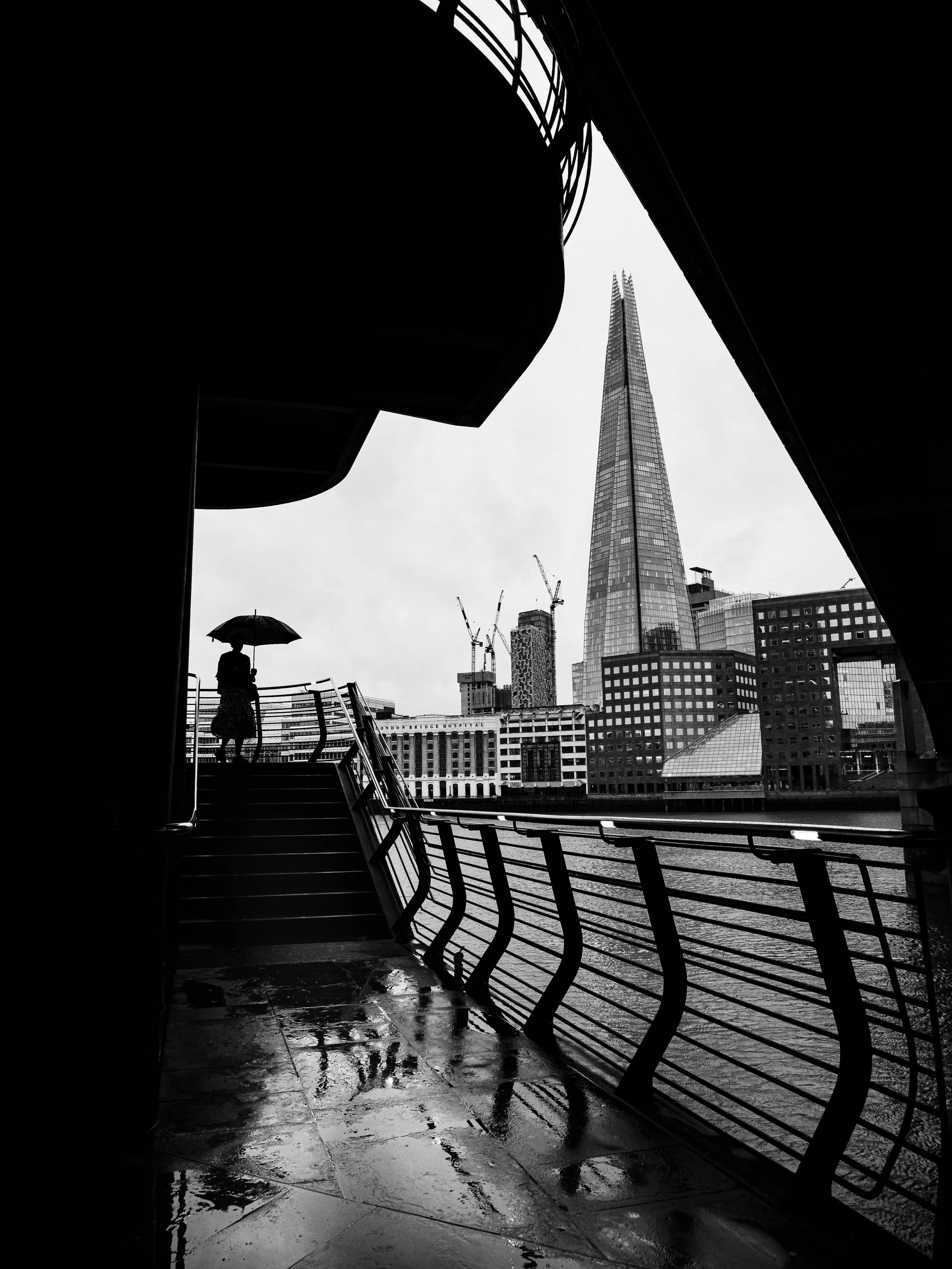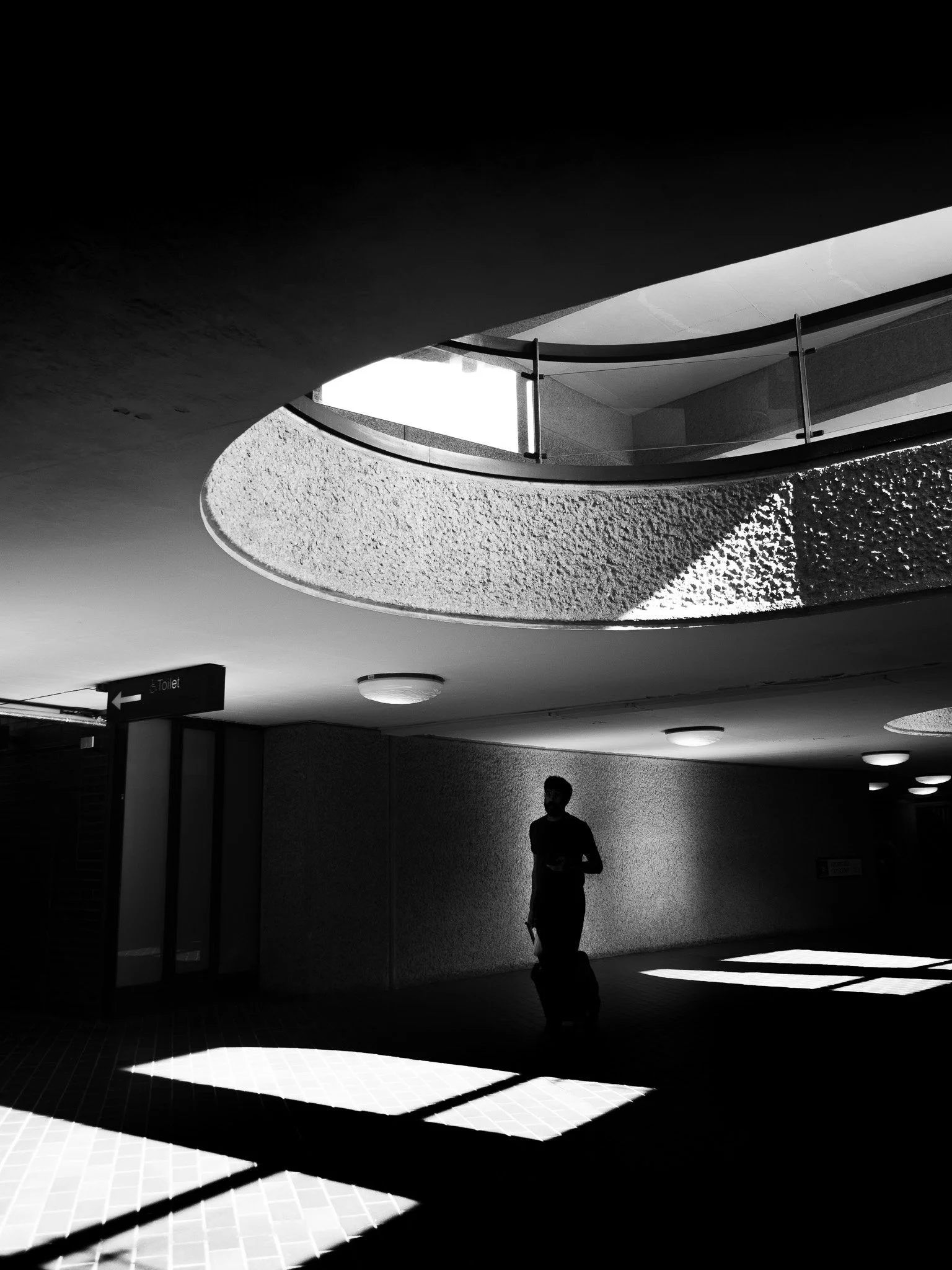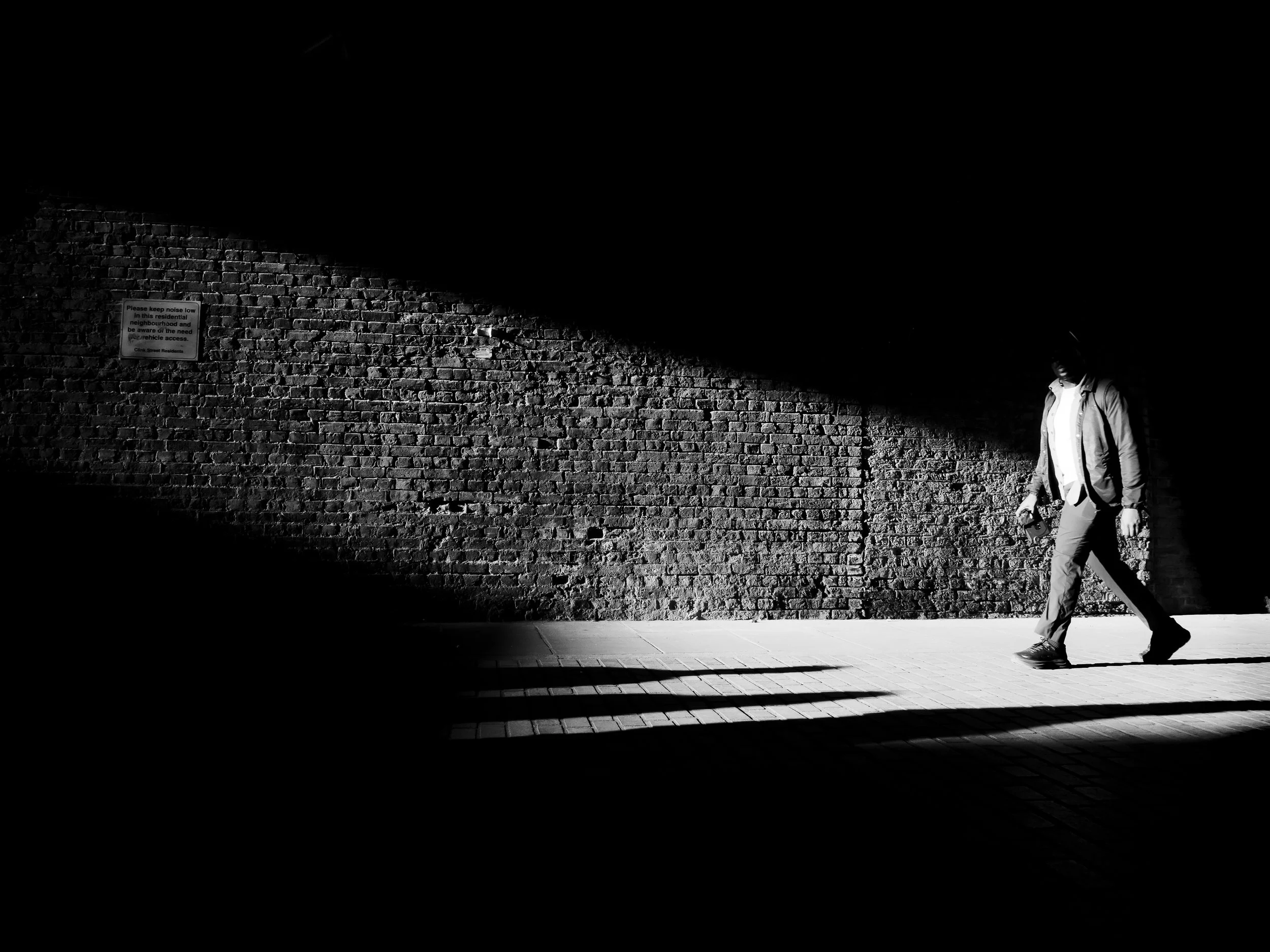Street Photography
Mono Tones
In a world saturated with colour, monochrome photography strips everything back to the essentials. By removing the distraction of hues, the focus shifts entirely to form, texture, light, and shadow—the raw elements that shape a scene. Subtle details, often lost in the noise of colour, suddenly emerge with clarity: the grain of weathered wood, the play of light across a wet pavement, the stark contrast between sunlight and shade on an urban wall.
While it’s possible to convert colour images to black and white afterwards, choosing to shoot in monochrome from the outset is a different experience. With the camera set to monochrome mode, the viewfinder offers a preview of the world in shades of grey. This immediate feedback sharpens your awareness of composition and tonal range, encouraging you to anticipate how light interacts with your subject. Every frame becomes a study in luminance and texture.
There’s a certain freedom in working this way. Without colour vying for attention, the mind is liberated to explore mood and atmosphere. In street photography, where moments are fleeting and unpredictable, this heightened focus can make the difference between a good shot and a truly striking one. Monochrome doesn’t just record the scene—it distills it, revealing an honesty and intensity that colour can sometimes obscure.
London
London
Fulham, London
Maidstone
Tate Modern, London
Baku
Barbican
Paris
Paris
Westminster Underground, London
London Underground
Westminster, London
Paris
Soho, London
Paris
Birmingham
Paris
Tate Modern
City of London
Soho, London
Tate Modern
Londonderry / Derry
Paris
Paris
Piccadilly, London
Barbican
Baku
Londonderry / Derry
London
Paris
Barbican

































